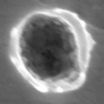(Press-News.org) Strong evidence now shows that human and animal parenting share many nervous system mechanisms. This is the conclusion of Yerkes National Primate Research Center researchers Larry Young, PhD, and James Rilling, PhD, in their review article about the biology of mammalian parenting, published in this week's issue of Science. Better understanding this biology could lead to improved social development, benefitting generations of humans and animals to come.
In their article, Young and Rilling review the biological mechanisms governing a shift in mammals' parental motivation that begins with aversion and transforms into irresistible attraction after giving birth. They say the same molecules that prepare the uterus for pregnancy, stimulate milk production and initiate labor also activate specific neural pathways to motivate parents to nurture, bond with and protect their offspring.
According to Young, "We have learned a tremendous amount about the specific hormonal and brain mechanisms regulating parental behavior and how parental nurturing influences the development of the offspring brain by using animal models, and many of these same mechanisms influence human parenting behavior as well."
Young is division chief of Behavioral Neuroscience and Psychiatric Disorders at the Yerkes Research Center, director of the Center for Translational Social Neuroscience at Emory, a William P. Timmie professor in the Department of Psychiatry at Emory's School of Medicine and author of The Chemistry Between Us: Love, Sex and the Science of Attraction, which also summarizes the parallels between brain mechanisms regulating sexual and parenting behaviors in animals and humans.
Rilling, who is a Yerkes researcher and an associate professor in Emory's Department of Anthropology, adds, "The human brain has mechanisms in place to support parent-child bonding, and when functioning properly, these mechanisms facilitate the development of secure attachment and sound mental health that is transmitted across generations."
The researchers divided their review into nine categories, including neural correlates of human parental care, two specific to parenting and oxytocin, two focused specifically on paternal caregiving by fathers and two related to the effect of parenting on social development. Examples within these categories include that the frustration inconsolable infant crying induces is a risk factor for infant abuse, highlighting the importance of emotion regulation for sensitive parenting; that oxytocin affects maternal motivation and paternal behaviors essential for nurturing, bonding and defending the offspring; that testosterone may interfere with parenting effort; and that variation in parental nurturing can affect brain development, thus affecting future social behaviors.
"With this comprehensive review, we can see nervous system correlations across species that result in positive and negative parental care," says Young. "This information is critical to further studying social development in order to facilitate positive parental behaviors that will benefit generations to come," he continues.
Established in 1930, the Yerkes National Primate Research Center paved the way for what has become the National Institutes of Health-funded National Primate Research Center (NPRC) program. For more than eight decades, the Yerkes Research Center has been dedicated to conducting essential basic science and translational research to advance scientific understanding and to improve human health and well-being. Today, the Yerkes Research Center is one of only eight NPRCs. The center provides leadership, training and resources to foster scientific creativity, collaboration and discoveries, and research at the center is grounded in scientific integrity, expert knowledge, respect for colleagues, an open exchange of ideas and compassionate, quality animal care.
Within the fields of microbiology and immunology, neurologic diseases, neuropharmacology, behavioral, cognitive and developmental neuroscience, and psychiatric disorders, the center's research programs are seeking ways to: develop vaccines for infectious and noninfectious diseases; understand the basic neurobiology and genetics of social behavior and develop new treatment strategies for improving social functioning in social disorders such as autism; interpret brain activity through imaging; increase understanding of progressive illnesses such as Alzheimer's and Parkinson's diseases; unlock the secrets of memory; treat drug addiction; determine how the interaction between genetics and society shape who we are; and advance knowledge about the evolutionary links between biology and behavior.
INFORMATION:
Understanding parallels of human and animal parenting can benefit generations to come
2014-08-14
ELSE PRESS RELEASES FROM THIS DATE:
Food allergies more widespread among inner-city children
2014-08-14
Already known for their higher-than-usual risk of asthma and environmental allergies, young inner-city children appear to suffer disproportionately from food allergies as well, according to results of a study led by scientists at the Johns Hopkins Children's Center.
The federally funded multi-center study, described online Aug. 13 in the Journal of Allergy and Clinical Immunology, found that at least one in 10 children from four large U.S. cities has a food allergy. However, the true number may be even higher, the investigators say, because the study used highly stringent ...
Severity of sleep apnea impacts risk of resistant high blood pressure
2014-08-14
DARIEN, IL – A new study shows a strong association between severe, untreated obstructive sleep apnea and the risk of elevated blood pressure despite the use of high blood pressure medications.
The study involved patients who had cardiovascular risk factors or established heart disease and moderate or severe obstructive sleep apnea. Among participants prescribed at least three antihypertensives including a diuretic, resistant elevated blood pressure was more prevalent in those with severe sleep apnea (58.3 %) compared with moderate sleep apnea (28.6%). Further analysis ...
UTSA research sheds light on factors affecting veteran hiring
2014-08-14
In the coming years, increased troop withdrawals from the Middle East may result in greater numbers of combat veterans searching for jobs in the private sector. According to the Bureau of Labor Statistics, military veterans have numerous problems gaining and maintaining jobs in the U.S., and their unemployment rates are consistently higher than nonveterans.
To help solve this problem, University of Texas at San Antonio (UTSA) College of Business Ph.D. student in organization and management studies Christopher Stone is leading groundbreaking research on the factors affecting ...
Single enzyme is necessary for development of diabetes
2014-08-14
An enzyme called 12-LO promotes the obesity-induced oxidative stress in the pancreatic cells that leads to pre-diabetes, and diabetes. 12-LO's enzymatic action is the last step in the production of certain small molecules that harm the cell, according to a team from Indiana University School of Medicine, Indianapolis. The findings will enable the development of drugs that can interfere with this enzyme, preventing or even reversing diabetes. The research is published ahead of print in the journal Molecular and Cellular Biology.
Nearly 40 percent of Americans—more than ...
Parasitic worms sniff out their victims as 'cruisers' or 'ambushers'
2014-08-14
It has been speculated that soil-dwelling parasitic worms use their sense of smell to find suitable hosts for infection. Research published on August 14th in PLOS Pathogens comparing odor-driven behaviors in different roundworm species reveals that olfactory preferences reflect host specificity rather than species relatedness, suggesting that olfaction indeed plays an important role in host location.
To study worm olfaction, Elissa Hallem, from the University of California Los Angeles, USA, and colleagues examined the host-seeking strategies and sensory behaviors of different ...
Drugs that flush out HIV may impair killer T cells, possibly hindering HIV eradication
2014-08-14
Histone deacetylase (HDAC) inhibitors have shown promise in "flushing out" HIV from latently infected cells, potentially exposing the reservoirs available for elimination by cytotoxic T lymphocytes (CTL), also called killer T cells. However, findings published on August 14th in PLOS Pathogens now suggest that treatment with HDAC inhibitors might suppress CTL activity and therefore compromise the "kill" part of a two-pronged "flush-and-kill" HIV eradication strategy.
At least three different HDAC inhibitors, romidepsin, panobinostat, and SAHA, are under investigation as ...
Plants may use newly discovered language to communicate, Virginia Tech scientist discovers
2014-08-14
VIDEO:
This time-lapse video shows how the parasitic plant dodder attacks tomatoes. But beyond stealing nutrients from the host plants, a Virginia Tech researcher has discovered that the two plants also...
Click here for more information.
A Virginia Tech scientist has discovered a potentially new form of plant communication, one that allows them to share an extraordinary amount of genetic information with one another.
The finding by Jim Westwood, a professor of plant pathology, ...
Human contribution to glacier mass loss on the increase
2014-08-14
This news release is available in German.
The ongoing global glacier retreat causes rising sea-levels, changing seasonal water availability and increasing geo-hazards. While melting glaciers have become emblematic of anthropogenic climate change, glacier extent responds very slowly to climate changes. "Typically, it takes glaciers decades or centuries to adjust to climate changes," says climate researcher Ben Marzeion from the Institute of Meteorology and Geophysics of the University of Innsbruck. The global retreat of glaciers observed today started around the middle ...
Seven tiny grains captured by Stardust likely visitors from interstellar space
2014-08-14
Since 2006, when NASA's Stardust spacecraft delivered its aerogel and aluminum foil dust collectors to Earth, a team of scientists has combed through the collectors in search of rare, microscopic particles of interstellar dust.
The team now reports that they have found seven dust motes that probably came from outside our solar system, perhaps created in a supernova explosion millions of years ago and altered by eons of exposure to the extremes of space. They would be the first confirmed samples of contemporary interstellar dust.
"They are very precious particles," ...
Memories of errors foster faster learning
2014-08-14
Using a deceptively simple set of experiments, researchers at Johns Hopkins have learned why people learn an identical or similar task faster the second, third and subsequent time around. The reason: They are aided not only by memories of how to perform the task, but also by memories of the errors made the first time.
"In learning a new motor task, there appear to be two processes happening at once," says Reza Shadmehr, Ph.D., a professor in the Department of Biomedical Engineering at the Johns Hopkins University School of Medicine. "One is the learning of the motor ...



